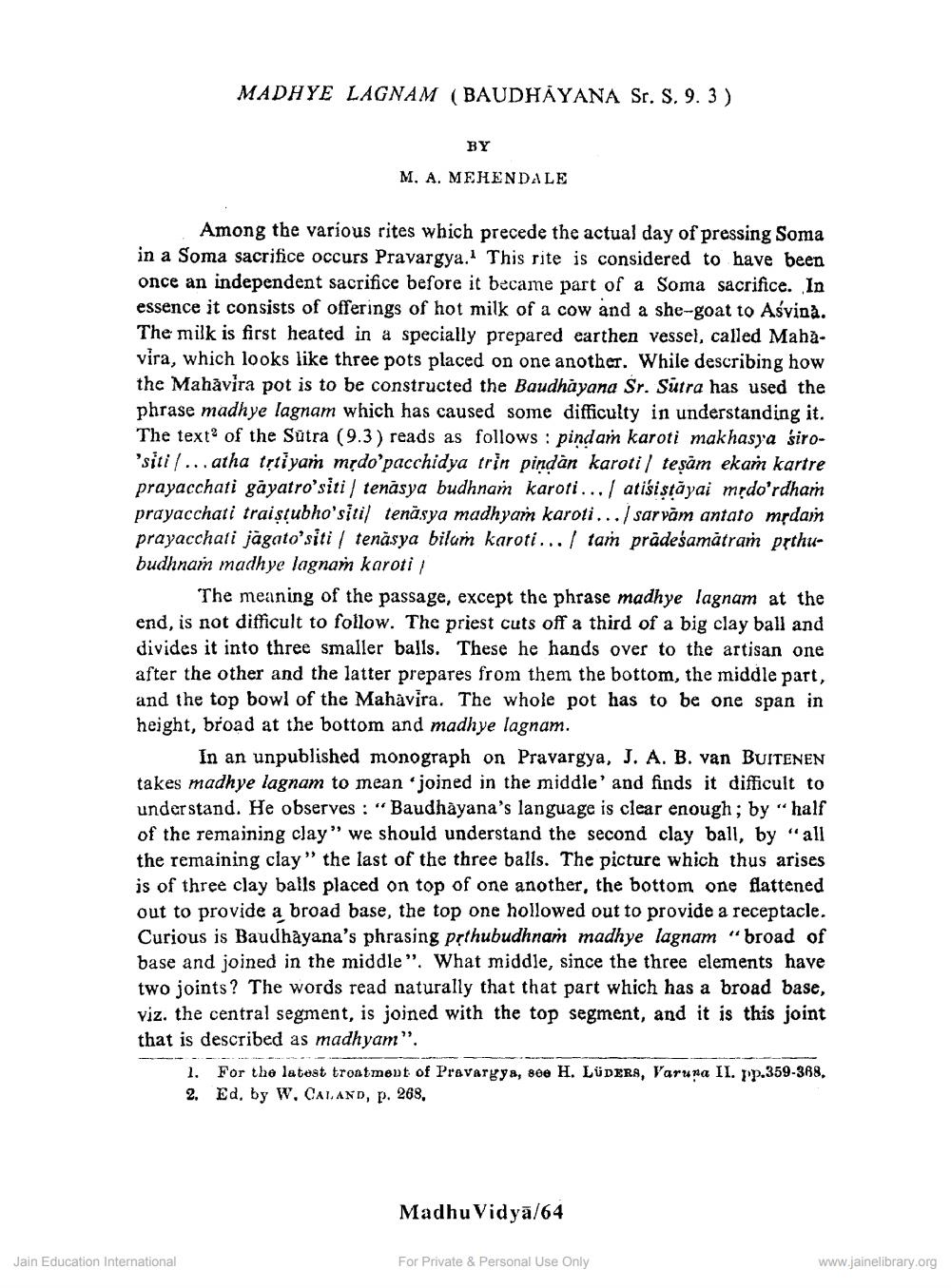________________
MADHYE LAGNAM (BAUDHAYANA Sr. S. 9. 3)
BY
M, A. MEHENDALE
Among the various rites which precede the actual day of pressing Soma in a Soma sacrifice occurs Pravargya.. This rite is considered to have been once an independent sacrifice before it became part of a Soma sacrifice. In essence it consists of offerings of hot milk of a cow and a she-goat to Aśvina. The milk is first heated in a specially prepared earthen vessel, called Mahavira, which looks like three pots placed on one another. While describing how the Mahavira pot is to be constructed the Baudhayana Sr. Sutra has used the phrase madhye lagnam which has caused some difficulty in understanding it. The text of the Sūtra (9.3) reads as follows: pindam karoti makhasya śiro'siti/ ... atha trtiyam mrdo'pacchidya trin pindan karoti/ teşam ekaṁ kartre prayacchati gayatro'siti, tenasya budhnam karoti... / atiśistāyai mrdo'rdham prayacchati traistubho'siti) tenāsya madhyam karoti... / sarvăm antato mrdan prayacchati jāgato'siti / tenāsya bilum karoti... / tam prādeśamātram prthubudhnaṁ madhye lagnam karoti /
The meaning of the passage, except the phrase madhye lagnam at the end, is not difficult to follow. The priest cuts off a third of a big clay ball and divides it into three smaller balls. These he hands over to the artisan one after the other and the latter prepares from them the bottom, the middle part, and the top bowl of the Mahavira. The whole pot has to be one span in height, broad at the bottom and madhye lagnam.
In an unpublished monograph on Pravargya, J. A. B. van BUITENEN takes madhye lagnam to mean "joined in the middle' and finds it difficult to understand. He observes : "Baudhayana's language is clear enough; by "half of the remaining clay" we should understand the second clay ball, by "all the remaining clay" the last of the three balls. The picture which thus arises is of three clay balls placed on top of one another, the bottom one flattened out to provide a broad base, the top one hollowed out to provide a receptacle. Curious is Baudhayana's phrasing prthubudhnam madhye lagnam “broad of base and joined in the middle". What middle, since the three elements have two joints? The words read naturally that that part which has a broad base, viz. the central segment, is joined with the top segment, and it is this joint that is described as madhyam".
1. For the latest troatment of Pravar ya, soe H. LÜDERA, Varuna II. pp.359-388. 2. Ed, by W. CALAND, P. 268,
Madhu Vidyā/64
Jain Education International
For Private & Personal Use Only
www.jainelibrary.org




